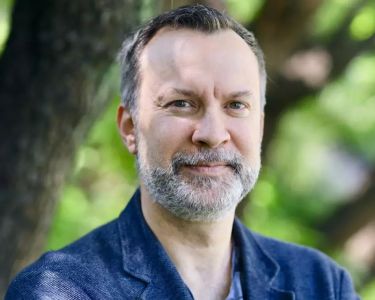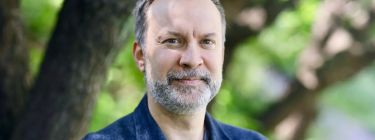
Renaissance 4.0: a vision of the cultural and creative industries
Professor of Music at Université Côte d’Azur, Nice
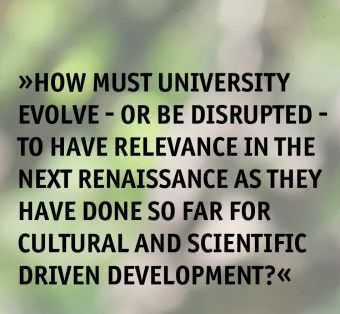
Renaissance 4.0: a vision of the cultural and creative industries
What can universities contribute to rebuilding society by a novel mix of arts and science?
Europe is currently going through an unprecedented crisis. In addition to the economic, demographic and migratory challenges that have traditionally been part of the reform of this large territory, the last decade has seen the addition of the climate challenge and the upheaval linked to the COVID-19 health crisis. By now, Europe has moved into what is known as the 4th industrial revolution, a new way of organising by combining a networked organisation and digital and collaborative development tools with the means of production in the real world. The European society, multicultural and cosmopolitan, is facing a new deal characterised by new technologies such as artificial intelligence and the virtualisation of sensory experiences. Major scientific advances coincide with new global issues. Faced with these doubts, society must question its traditional categories and rethink its objectives and its organisation.
Access to resources becomes a fundamental issue. The liberation and concentration of energies is an essential pillar of any strategy and any initiative. The collective, the local anchoring, becomes fundamental not only to reactivate the creative forces, but also to ensure to minimise their environmental impacts and to refocus the questioning of tomorrow’s production modes on the human, on the sustainable. Towards a more inclusive, resilient society. Towards a more shared academy. Towards a meeting where several platforms, several laboratories, in direct access, cohabit and share their information, and several ecosystems come together by mixing artistic and scientific perspectives. The great thinkers of the historical Renaissance had established this spirit of rupture, this capacity to embrace both the rigour of artistic thought and the formidable intuitions of scientific rationality. What does this imply for the future of universities? How must university evolve—or be disrupted—to have relevance in the Next Renaissance as they have done so far for cultural and scientific driven development?
Changing universities at the rupture of artistic and scientific perspectives
It is in this context and in order to respond to new challenges that Université Côte d’Azur has decided to undertake a profound transformation of its organisation. It has identified cross-disciplinary scientific axes to allow for multidisciplinary encounters. It is directly involved in the New Renaissance: the Arts and Sciences research program, for example, has been a driving force for the development of cross-disciplinary thinking around the history of art and the avant-garde, the practices of the performing arts, musical creation and composition, and the use of new technologies and digital technology. Thus, artistic creation is associated with the creation of new tools and new technologies, allowing the incubation of new projects, such as in music composition research, including a Cotutelle with Hamburg and the film In minimis maxima, a cross between artistic film-making and archaeological research. Innovating universities—as we are doing here at Université Côte d’Azur—is a prerequisite for an active form of creative research and transdisciplinarity.
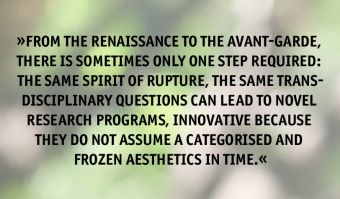
Evolving new educational forms for a Renaissance in Europe
From the Renaissance to the avant-garde, there is sometimes only one step required: the same spirit of rupture, the same transdisciplinary questions can lead to novel research programs, innovative because they do not assume a categorised and frozen aesthetics in time.There are in expressionism and futurism, in dada and fluxus, eerily premonitory resonances with the trajectories of today. “Relaunching the Avant-Garde” is one such new educational format, questioning the typical modes of production of the historical avant-garde and the new avant-garde of the 1960s.
Here the collective creation experiences of yesterday become the Creative Labs in free access, in open source, a common reflection on artistic creation and research in a world in crisis. Our daily life is now full of art and design. The number four touches all experiences: the revival 4.0, 4D cinema, 4D sound. The border between the real and the virtual, between the tangible and the digital, now immediate, needs to be probed.
Evolving organisational education structures—and what novel technologies have to do with it
The COVID-19 crisis gave birth to this grouping of researchers within Université Côte d’Azur around this simple idea: Sometimes experiences in extended reality (XR) require the implementation of new technologies, new methodologies, so we move from the interdisciplinary to the transdisciplinary: to propose the vision of a common project, a common work in order to consider new experiences of existence. Probing the continuum between the real and the virtual, these forms of immersivity require a high level of expertise, transdisciplinary, and its exploration using innovative technological platforms AND Université Côte d’Azur has set up a novel research centre dedicated to extended reality (XR2C2). This cooperative dynamic questions narrative as well as performativity, the formalisation of uses, curatorial practices as well as the effects of training and rehabilitation.
Another innovative mix of science and arts driven by new technologies is the Virtual Reality for Gender Equality in Education (RevEGO) project. It works against gender inequality and discrimination in digital domains and in particular in the field of education and career guidance. The Project Perception Toolbox for Virtual Reality (INRIA) allows the creation of visual perception experiences in virtual reality, with a research purpose but also a reading aid for people with low vision.
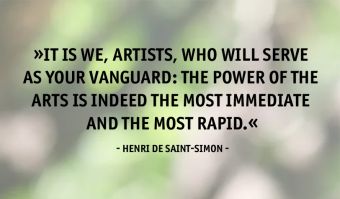
Experiences of Université Côte d’Azur teach us that education and research starts local, and they led to society matters.
Such radical intersections of artistic and scientific experiences—as at U7+ Alliance of world universities and Université Côte d’Azur—should lead the whole of society to immerse itself in a reflection on otherness, on a certain form—in the aesthetic sense—of vision of the world, so that art can, at times, revive the place it once occupied in the Camerata Fiorentina. Or as it was described in Henri de Saint-Simon’s The Artist, the Scientist, the Industrialist (1824), „It is we, artists, who will serve as your vanguard: the power of the arts is indeed the most immediate and the most rapid. We have weapons of all kinds: when we want to spread new ideas among men, we inscribe them on marble or on canvas; we popularize them by poetry and song; we employ alternately the lyre or the galoubet, the ode or the song, the history or the novel; the dramatic stage is open to us.”
Damien Ehrhardt and Hélène Fleury recall the extent to which the great figure of Alexander von Humboldt prefigured the current challenges of history. By combining science and aesthetics, by associating observation, artistic fascination and understanding of the world, Humboldt was one of the great operators of transdisciplinarity, of the connection between the fields of knowledge, learning and art, by reviving the spirit of humanism. The place of science, art and technology in our societies is fundamental, and even more so when it is aimed at education. In a digital, globalised environment, thinking about this next Renaissance also means, paradoxically, giving meaning to local energies, to the forces that combine in proximity and in education, mutual aid, and local culture.
Today’s organisational challenge to empower novel creations in a Next Renaissance is that a global university such as Université Côte d’Azur must, first of all, interact at the level of local authorities to federate the players, to develop techniques of knowledge and education in direct access, so that everyone can access the data and the tools to transform tomorrow’s society. It is to all of these challenges that we are responding. To quote Saint-Simon again, „the power of imagination is incalculable when it takes off in a direction of public good.”
MORE INFO ON UNIVERSITÉ CÔTE D'AZUR
Université Côte d’Azur is an experimental, research-intensive multidisciplinary university. It was created out of the desire of research centers and major educational establishments to build a university with exceptional academic potential that is creative and humanistic. It is developing a strategy based on both excellence and interdisciplinarity, which places it in the top 3% of the world’s universities and makes it one of France’s 10 major research-intensive universities (IDEX label).
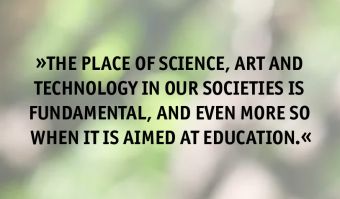
Jean-François Trubert
Professor of Music at Université Côte d’Azur, Nice
Jean-François Trubert’s work focuses on the creative process of music, especially in contemporary opera and new music theater, but also in multimedia and digital environments, with an emphasis on the question of gesture and its relationship to the aesthetic form of the works. His research include the works of Kurt Weill, Luciano Berio, Mauricio Kagel, and Georges Aperghis. Former Dean of the Graduate School of Arts and Humanities “CREATES”, he is a member of the Transdisciplinary Center in Epistemology of Litterature and performing Arts (CTEL), and founded a interdisciminary Center for Research and Creativity in Extended Reality at Université Côte d’Azur. He is co-director of the collection Arts, Cultures, Pouvoirs at Presses Universitaires de Savoie-Mont Blanc, he is involved in research projects founded by the National Research Agency and European Council Europe Creative. He has published in the Brecht-Yearbook, the journals filigrane, Dissonance and in the Contemporary Music Review, as well as in collective works.
Picture: © C.A. MACARRI université d’Azur
